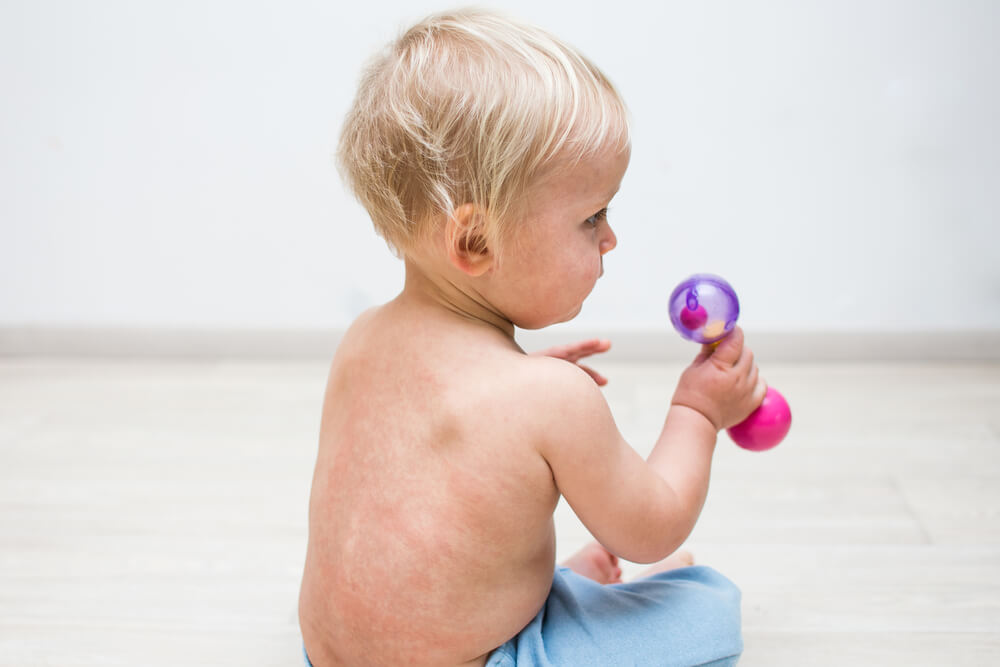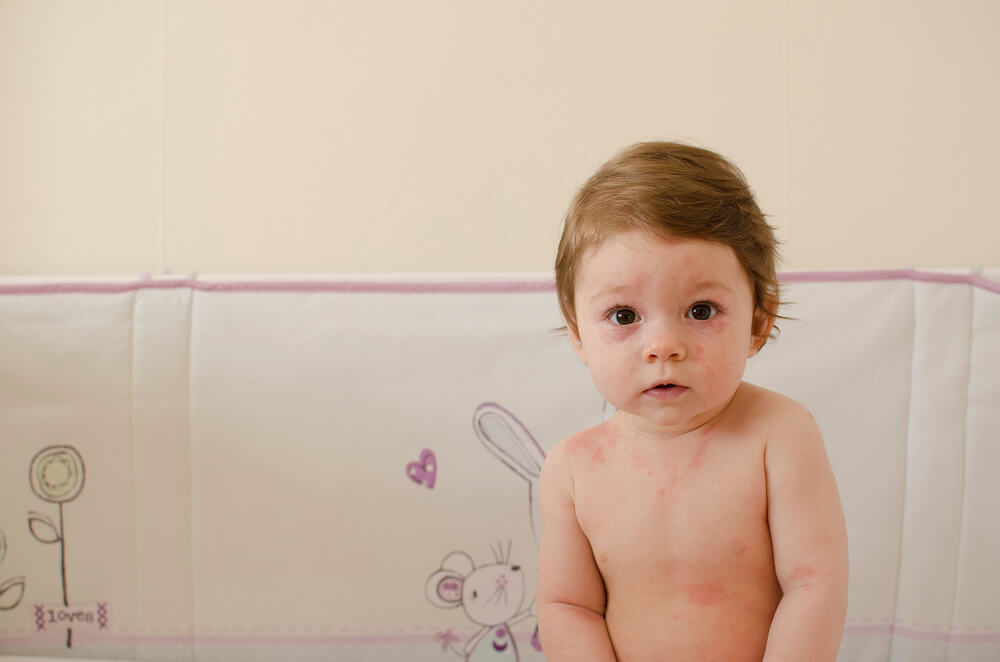A typically mild infection that mostly tends to affect kids by the time they’re two years old is known as roseola. The roseola rash is actually one of the most common childhood viruses since most kids have already dealt with it by the time they reach kindergarten age. So, what causes roseola? The main trigger is strain six of the herpes virus, which is also why roseola is often referred to as the sixth disease. However, it’s also possible for strain seven of the herpes virus to sometimes cause roseola rash. Whether the child shows very mild or full range of roseola symptoms is very individual. In general, the roseola incubation period is anywhere between five and 15 days after being exposed to the virus.
In most cases, roseola is nothing dangerous or overly serious. Still, it can result in a high fever which needs to be treated accordingly to avoid potential complications. Essentially, the usual treatment involves plenty of rest and fluid intake, with added fever-reducing meds if necessary. Make sure to take your kid to the pediatric doctor before you decide to give them any meds on your own, though.
The Common Symptoms of Roseola
What causes roseola in most cases is strain six of the herpes virus. That said, the first symptoms of this sixth disease tend to appear after the week or two of the roseola incubation period – if any symptoms appear at all. Some children get infected but have no or very mild symptoms that the infection goes completely unnoticed.
If symptoms do show up, the most common ones include fever and roseola rash. The fever often starts very suddenly and tends to run higher than 103° F (39.4° C). In some cases, kids will also experience cold symptoms before or during the fever, such as cough, runny nose, and/or sore throat. It could also happen that the lymph nodes in the child’s neck get swollen. The fever generally lasts for about three to five days.
Sometimes when the fever goes down, a kid will get a rash characterized by small pink patches or spots. A whitish ring could also circle some spots. This rash usually affects the chest, abdomen, and back first, but it can also spread to the arms and neck; in very rare cases, it can even affect the face and legs. The rash caused by this sixth disease can last anywhere from just a couple of hours to a couple of days. Fortunately, the rash itself isn’t painful, itchy, or otherwise uncomfortable.
Some other symptoms may show up, such as:
- Swollen eyelids
- No or very little appetite
- Mild diarrhea
- A general feeling of irritability
Before they diagnose the child with roseola, the pediatrician will first inquire about their medical history and current symptoms. If the kid has already developed a rash, inspecting it will be a part of the physical exam. In general, rash and high fever combined are usually more than enough to pinpoint this issue.

How Is Roseola Treated?
What kind of treatment will be prescribed depends on the child’s symptoms after the roseola incubation period. Also, the pediatrician will take into account the child’s overall health and age. We mentioned that what causes roseola in the first place is the herpes virus, which is not treated with antibiotics, so there won’t be any antibiotics involved in the treatment.
The whole point of the treatment is to help alleviate the existing symptoms. In that sense, the treatment may involve the following:
- Giving your child plenty of fluids
- Dressing the child in light clothes while they’re feverish
- Giving the child ibuprofen or acetaminophen to reduce the fever
If your child has a high fever and meds for reducing it may be necessary, make sure to discuss the safest options with the pediatrician. What fever-reducing meds are acceptable will highly depend on the child’s age. Namely, most kids that are younger than six months should not be given ibuprofen. Most importantly, never give your child aspirin as it can lead to other, more severe complications.
Once the child’s temperature is normal for at least 24 hours, they are not contagious anymore, regardless of whether they still have a rash or not. Essentially, what constitutes a normal temperature is a range that’s anywhere between 97.5° F and 99.5° F (35.4° C and 37.5° C).
When to See a Doctor?
You need to seek immediate medical assistance in case your child starts having seizures/convulsions, or their fever tends to spike too quickly. Once the child develops a fever, the risk of potential seizures is typically non-existent. But, if you notice anything that looks seizure-like in your child, get them medical help immediately.
Obviously, if the roseola symptoms are mild, you may not need to take your child to the doctor at all. However, it’s recommended that you at least call your child’s pediatrician if the child has a very high fever that’s over 103° F (39.4° C), their fever doesn’t seem to pass even after a whole week, or their rash doesn’t seem to start fading even after three days. The doctor will tell you what to do and whether it’s necessary to take the child to see them.
While roseola mostly affects children, in some instances, adults can get infected too. Like it happens with many other childhood-common illnesses, roseola infection can appear considerably more severe in adults. This is why you, as an adult, should also reach out to your doctor if you have a compromised immune system and have been in contact with someone with roseola.

Is Roseola Preventable?
Since it’s a virus infection, there’s no vaccine or any other sure way to completely prevent roseola. The most important thing is for all family members to maintain good hygiene. Still, there are some practices that could potentially minimize the risk of roseola infection, such as:
- Staying away from those who are infected
- When you need to sneeze or cough, do so into the crook of an elbow
- Wash your hands regularly and use hand sanitizers accordingly
As stated before, roseola is often not a condition that could affect the child’s health seriously later on. Most kids recover from it rather quickly and have no long-term complications with their health. However, if the child has a weaker immune system due to some autoimmune disorder, cancer, or whatever other reason, there’s a higher risk of developing pneumonia. Once they get infected with roseola, kids become immune to this particular virus, so they are not very likely to get it ever again.
A lot of children who get infected with roseola have very mild symptoms that go away soon enough. Even if the symptoms are stronger, this particular virus is thought very common for kids and is typically no reason for concern. Of course, if you notice any of the above-mentioned worrying symptoms that might warrant immediate medical attention, make sure to take your child to the hospital as soon as possible. However, keep in mind that these instances are very rare. That said, we at Worldwide Pediatrics provide thorough and comprehensive care for all our young patients and help their parents cope accordingly, so don’t hesitate to reach out to us if you want to trust the health of your child to expert and understanding health specialists.



